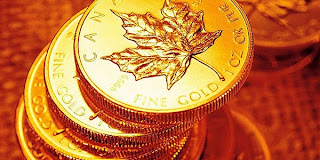Of all the different precious metals we can think of, gold is certainly the one most greatly desired. Since the beginning of recorded history, gold has been in use in many different works of art, coinage, and, of course, jewelry. Occurring as grains in rocks and in alluvial deposits, gold is shiny, soft, and dense. It is known to be the most ductile and malleable pure metal.
What makes pure gold especially attractive is its bright yellow color and luster. These characteristics are maintained as gold is chemically unaffected by air or moisture. Here are some of the properties of gold:
General:
• Chemical Symbol: Au
• Atomic Number: 79
• Category (as an element): Transition Metal
• Group/ Period/ Block (in the Periodic Table): 11/ 6/ d
• Atomic Weight: 196.966569(4) g.mol-1
• Electron Configuration: [Xe] 4f14 5d10 6s1
Physical:
• Density (near room temperature): 19.30 g.cm-3
• Liquid Density (at melting point): 17.31 g.cm-3
• Melting Point: 1064.18°C, 1947.52°F, 1337.33°K
• Boiling Point: 2856°C, 5173°F, 3129°K
• Heat of Fusion: 12.55 kJ.mol-1
• Heat of Vaporization: 324 kJ.mol-1
Atomic:
• Oxidation States: -1, 1, 2, 3, 4, 5
• Electronegativity: 2.54 (Pauling scale)
• Atomic Radius: 144 picometre
• Covalent Radius: 136±6 picometre
• Van der Waals Radius: 166 picometre
• Ionization Energies: 890.1 kJ.mol-1 (first), 1980 kJ.mol-1 (second)
The term "gold" was derived from "geolu", an Old English Anglo-Saxon word which means "yellow". Its symbol "Au", on the other hand, originated from "aurum", the Latin word for "gold". The exact period when gold was first discovered could be a subject of dispute. While some accounts point to the year 1848 when gold was discovered in California, history tells us that this precious metal was already being used extensively by the ancient Egyptians, Romans, Greeks, Chinese, and South Americans.
Throughout history, gold has served as a measure of value and a symbol of wealth. It is one of the coinage metals (along with silver and copper). It is used, customarily and legally, as a means of payment or a medium of exchange. Gram and troy weight are the units of measurement used for gold. To indicate the amount of gold present in, say, a piece of jewelry, the term "carat" is used. A necklace, for instance, that is 24 carats means that it is made of pure gold.
While gold's price is determined through trading in the derivatives and gold markets, its daily benchmark price is provided in a procedure called the London Gold Fix. In this procedure, the price of the precious metal is determined each business day on the London market. The fixing is done twice - once in the morning and another in the afternoon. The latter actually was introduced about 49 years after the procedure itself was introduced, as a means of providing a price when US markets are open.
This gold-price fixing procedure is done by the five members of the London Gold Market Fixing Ltd., namely The Bank of Nova Scotia, Barclays Capital, Deutsche Bank AG London, HSBC, and Societe Generale Corporate & Investment Banking. You can find even more detailed information about gold from Hubpages.

No comments:
Post a Comment